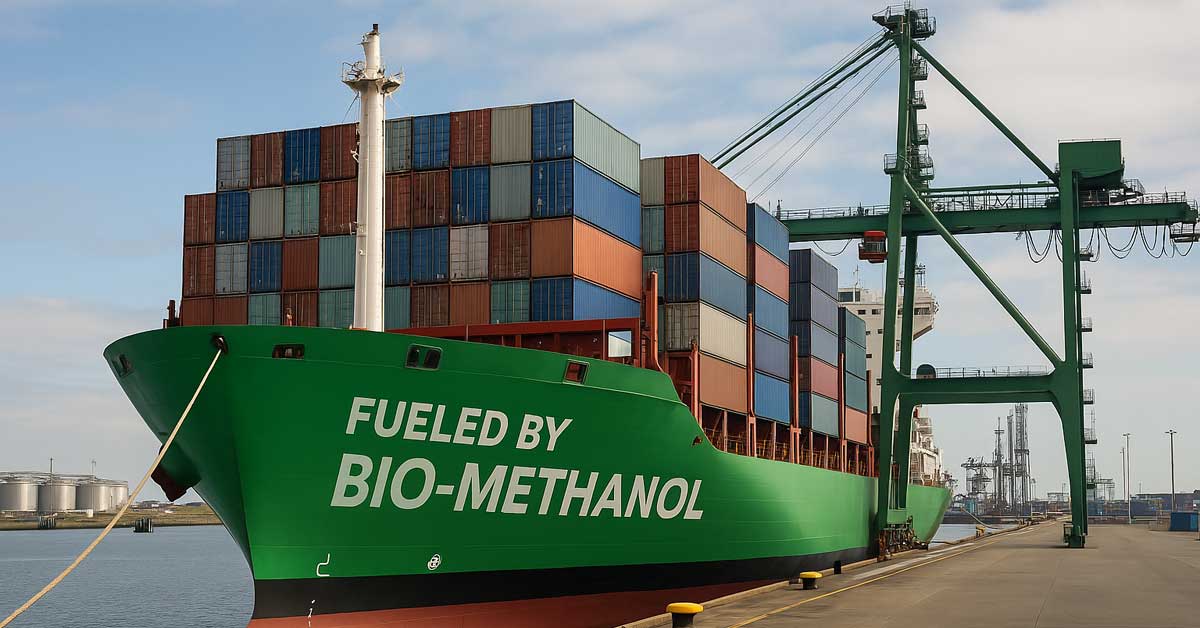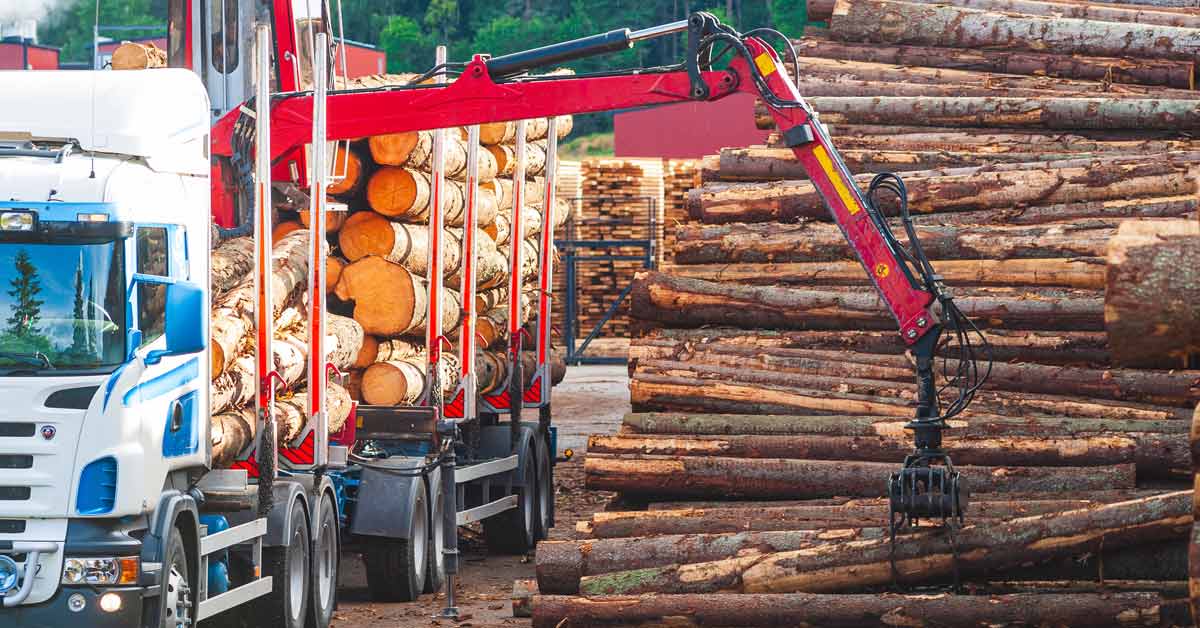
Global efforts to decarbonize the maritime sector have increasingly focused on reducing emissions from shipping and fishing vessels. As we’ve highlighted in our recent post on bio-bunkering developments in Panama, this shift is opening new opportunities for cleaner marine fuel alternatives at major international ports.
These developments suggest that a clear shift is underway toward alternative fuels and renewables. Among the top contenders in the race for low-emission shipping is methanol.
Methanol is gaining some noteworthy traction. Both renewable and energy-dense, it provides a practical, scalable solution to help the industry bridge the gap between today’s conventional fuels and tomorrow’s net-zero future.
Recent developments in Norway and Singapore highlight the value and importance of this alternative fuel. From new bio-methanol-powered vessels entering service in Europe to rigorous new licensing regulations for methanol bunkering in Asia, the international momentum for this fuel is undeniable.
Where Methanol Fits into the Formula
Methanol offers a unique blend of economic and sustainability advantages that make it an appealing choice for marine fuel:
- Renewable: Methanol can be derived from renewable sources like biomass and captured carbon.
- Simple Bunkering Infrastructure: Methanol is liquid at ambient temperature and pressure. This makes storage and bunkering infrastructure less complex than alternatives like hydrogen or ammonia.
- Dual-Fuel Compatibility: Operationally, methanol is compatible with dual-fuel engines. This enables vessels to operate across both conventional and green fuel streams.
- Clean Combustion: Methanol also combusts cleanly, reducing emissions from nitrogen oxides (NOx), sulfur oxides (SOx), and particulate matter.
- Compliance Ease: Methanol’s composition makes it a strong candidate for compliance with tightening IMO regulations and regional emission control area (ECA) requirements.
Norway Leads with Bio-Methanol-Powered Container Ships
Norway recently hit a major milestone with the launch of the NCL Vestland, one of the first two container vessels in the country to be powered by bio-methanol.
Operated in partnership with North Sea Container Line (NCL) and MPC Container Ships, this vessel—along with its sister ship NCL Nordland—is part of a direct initiative to move Norway’s short sea shipping operations toward lower carbon output.
Built by China’s Taizhou Sanfu Ship Engineering, they are equipped with dual-fuel engines capable of running on either conventional diesel or green methanol. The ship’s introduction is backed by financial support from Norway’s Enova SF (NOK 13.7 million or $1.3 million USD) and the NOx Fund (NOK 60 million or $5.7 million USD). Both aim to accelerate the adoption of cleaner technologies in shipping.
Initially, the ships will operate using a 5% blend of bio-methanol in 2025. They will increase the proportion as supply and infrastructure improve.
The methanol will be sourced through an agreement with Equinor and bunkered in Norway. The deal ensures a secure and local fuel supply chain.
Beyond fuel, the vessels feature an array of advanced technologies designed to maximize efficiency and safety. It will yield an over 60% reduction in energy consumption per TEU per nautical mile—a substantial leap in operational efficiency.
These new ships are also just the beginning. NCL plans to introduce the world’s first ammonia-powered feeder vessel by 2026 in collaboration with Yara International. The goal is to further Norway’s longer-term goal of zero-emission shipping.
Singapore’s Regulatory Roadmap for Methanol Bunkering
Meanwhile, Singapore is tackling another vital part of the equation: building the regulatory and logistical foundation needed for scalable methanol bunkering.
The Maritime and Port Authority of Singapore (MPA) recently opened applications for licenses to supply methanol as a marine fuel. This move signals a strong commitment by the world’s largest bunkering hub to support low-carbon fuel adoption.
According to a Prima Carbon Mitigator report from ResourceWise, Singapore may require over 1 million tons of methanol per year by 2030 to meet expected demand. Although this represents only about 1% of the port’s current bunkering volume in energy terms, it illustrates the vast potential for growth as shipping companies pivot toward greener alternatives.
The MPA’s licensing framework includes robust requirements to ensure applicants are prepared to deliver on the promise of methanol. Companies must offer full end-to-end bunkering solutions:
- Securing methanol supply
- Ensuring storage capacity
- Implementing safety protocols
- Demonstrating vessel readiness
Additionally, licensees must own at least one type 2 chemical tanker. For now, this limits participation to those with genuine operational capabilities.
Another key requirement is that all licensed methanol must meet specific carbon intensity thresholds. This ensures that only low-carbon methanol is permitted under the plan. Examples include methanol produced from biomass or utilizing carbon capture.
Read More: Biogenic CO2 Removal in the US Takes Shape with Immense Potential
The licenses will be valid from January 1, 2026, through December 31, 2030. Companies will have a five-year window to scale up operations and refine logistics.
To further modernize the sector, license holders are encouraged to adopt digital bunkering solutions such as mass flow meters and automated tracking systems. These technologies are designed to improve transparency, efficiency, and traceability in an industry that has traditionally relied on manual processes.
With applications due by May 28, 2025, companies must establish their credentials and secure a foothold in this expanding segment of maritime fuel supply.
Methanol's Current Benefits and Future Outlook
The developments in both Norway and Singapore reflect a broader turning point in global shipping’s decarbonization pathway. Methanol is no longer a theoretical solution or a niche experiment—it is a fuel with real momentum. It is backed by public investment, private-sector innovation, and robust regulatory support.
Vessel operators, fuel suppliers, and port authorities alike must act now to support this transition. The infrastructure, policy frameworks, and market signals are aligning in favor of methanol. Early movers stand to benefit from both financial incentives and strategic positioning.
The maritime sector faces compliance challenges with IMO targets and regional emission standards. Methanol offers a viable pathway forward. It combines environmental performance with operational practicality and is supported by a growing number of producers, engine manufacturers, and port operators.
As more stakeholders join the transition, this renewable fuel may soon play a central role in charting a sustainable course for global trade.
Learn More About Green Fuels in the Maritime Sector
As biofuels continue their adoption, the spotlight is shifting to marine fuels as another avenue for innovation and sustainable growth. The bio-bunkering sector is gaining serious momentum, with major global hubs like Singapore and the Amsterdam-Rotterdam-Antwerp (ARA) region leading the charge.
Learn how everything fits together with our on-demand webinar: The Rise of Marine Biofuels.
Key Points:
- Current status of the bio-bunkering industry
- Bio-bunkering global locations and what’s driving the market
- Fuel cost analysis
- Regulations currently driving biofuel adoption
- Future prospects on marine fuels market
Use the link below to watch the webinar today.






